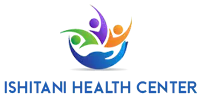Laser Therapy
Expertly treating pain in the Fort Lee, NJ area
What is Laser Treatment
L.A.S.E.R. (Light Amplification by Stimulated Emission of Radiation) is a name for a type of intense radiation of the light spectrum. A laser is a beam of light in which high energies can be concentrated. Laser light has unique physical properties, which other types of light do not have. These are coherence and monochromaticity. These are what makes laser light is so effective compared to other kinds of light in the field of pain reduction and healing. Laser treatment (also known as phototherapy and low level laser therapy) involves the application of low power coherent light to injuries and lesions to stimulate healing and reduce pain. It is used to increase the speed, quality and strength of tissue repair, resolve inflammation and give pain relief. Low level laser technology has been found to offer superior healing and pain relieving effects compared to other electrotherapeutic modalities such as ultrasound, especially in dealing with chronic problems and in the early stages of acute injuries. Low level laser technology is a complete system of treating muscle, tendon, ligament, connective tissue, bone, nerve, and dermal tissues in a non-invasive, drug-free modality.
How does Laser Therapy work?
The effects of low level laser treatments are photochemical. Photons enter the tissue and are absorbed in the cell’s mitochondria and at the cell membrane by chromophores. These chromophores are photosensitizers that generate reactive oxygen species following irradiation thereby influencing cellular redox states and the mitochondrial respiratory chain. Within the mitochondria, the photonic energy is converted to electromagnetic energy in the form of molecular bonds in ATP (Adenosine Triphosphate). In order to interact with the living cell, laser light has to be absorbed by intracellular chromophores. Cell membrane permeability increases, which causes physiological changes to occur. These physiological changes affect macrophages, fibroblasts, endothelial cells, mast cells, bradykinin and nerve conduction rates. The clinical and physiological effects are obtained by the way in which tissues absorb laser radiation. This tissue absorption depends on the wavelength of the beam itself and the power to ensure that the laser energy reaches the target tissue at the necessary clinical levels. The improper wavelength of laser light would not penetrate into the tissue to reach the target area. Furthermore, even if one has a laser with the proper wavelength, if the device does not have enough power to drive the energy into the tissue, the target area may not realize the potential benefits. Each type of laser emits light at a very specific wavelength which interacts with the irradiated tissue. It also acts in particular with the chromophores present in the tissue, but in a different way. A chromophore, intrinsic or extrinsic, is any substance, colored or clear, which is able to absorb radiation. Among the endogenous chromophores are water and hemoglobin, nucleic acid and proteins. Among the exogenic chromophores are porphyrins and hematoporphyrins, which are injected into the organism. These are described as photosensitizers because they fix themselves to the tissue making it photosensitive at specific wavelengths.
Is Laser Therapy safe?
Yes, Multi Radiance Medical laser treatments are completely safe, drug-free and non-invasive. Multi Radiance Medical devices have an FDA Clearance and CE certification, a mark of European safety and legal compliance. However, since all lasers produce a high intensity light, one should never shine the laser directly into the eye. Also, you must follow the manufacturer’s instructions and be aware of all contraindications. Read the device operating and protocol manuals before usage. It is recommended that the laser device not be used directly on any neoplasmic tissue. Pregnant women should refrain from laser treatments applied directly to the abdomen. Also people with pacemakers should not use laser treatments near the heart.
If you believe you could benefit from high-quality care, consider getting treatment from the staff at Ishitani Health Center. Our dedicated staff will be pleased to answer your questions today. We can also help you schedule a time to visit our Fort Lee office.
Call Us: (201) 302-9993
Email: info@ishitanihealth.com






